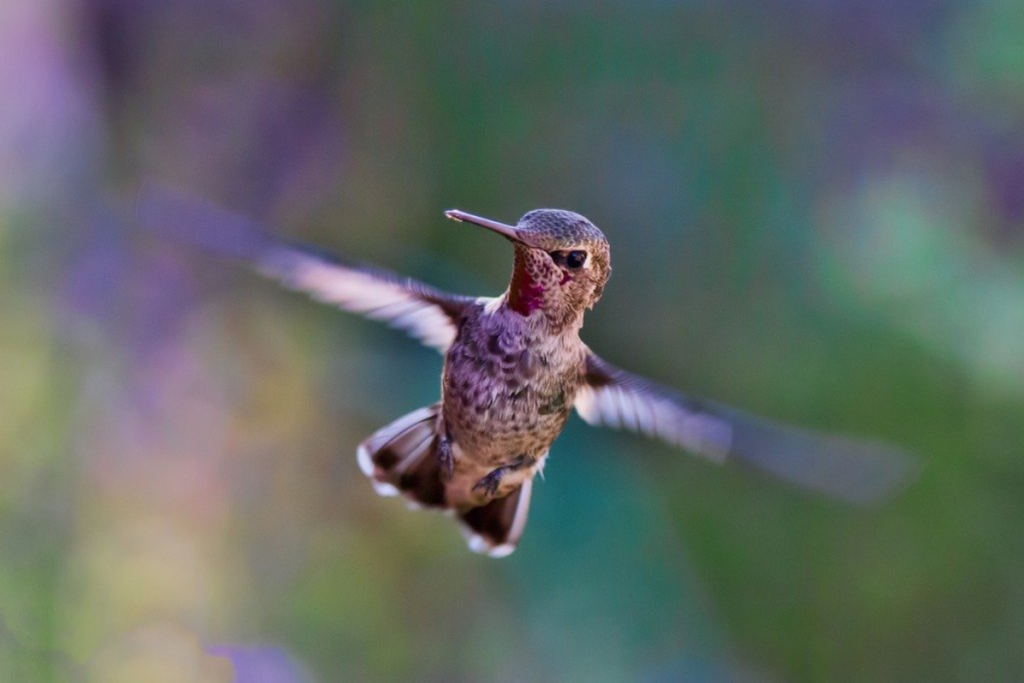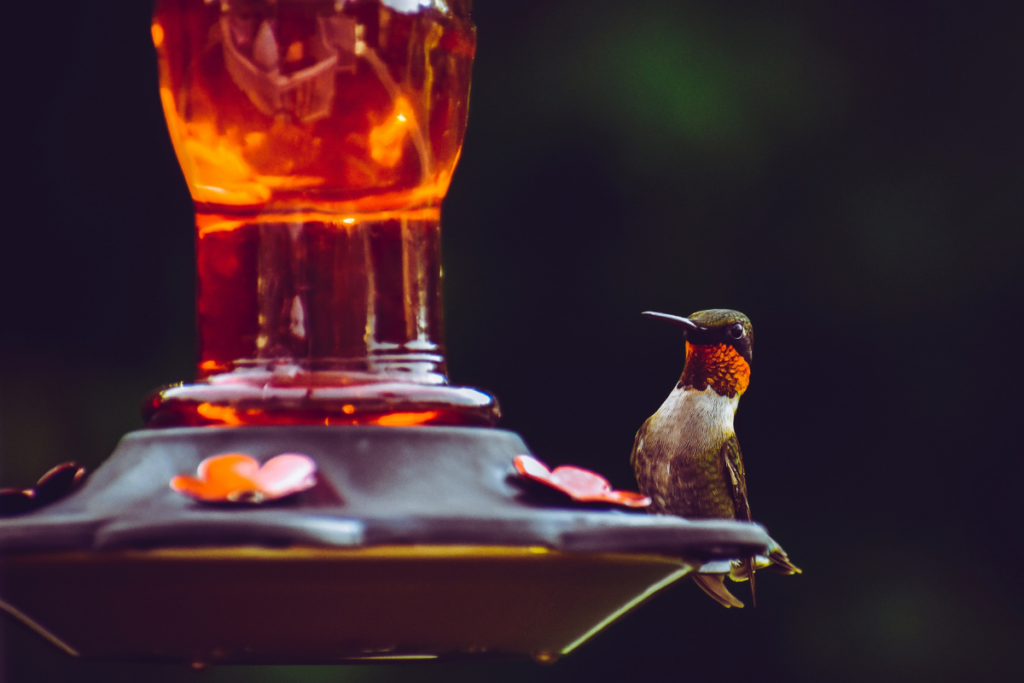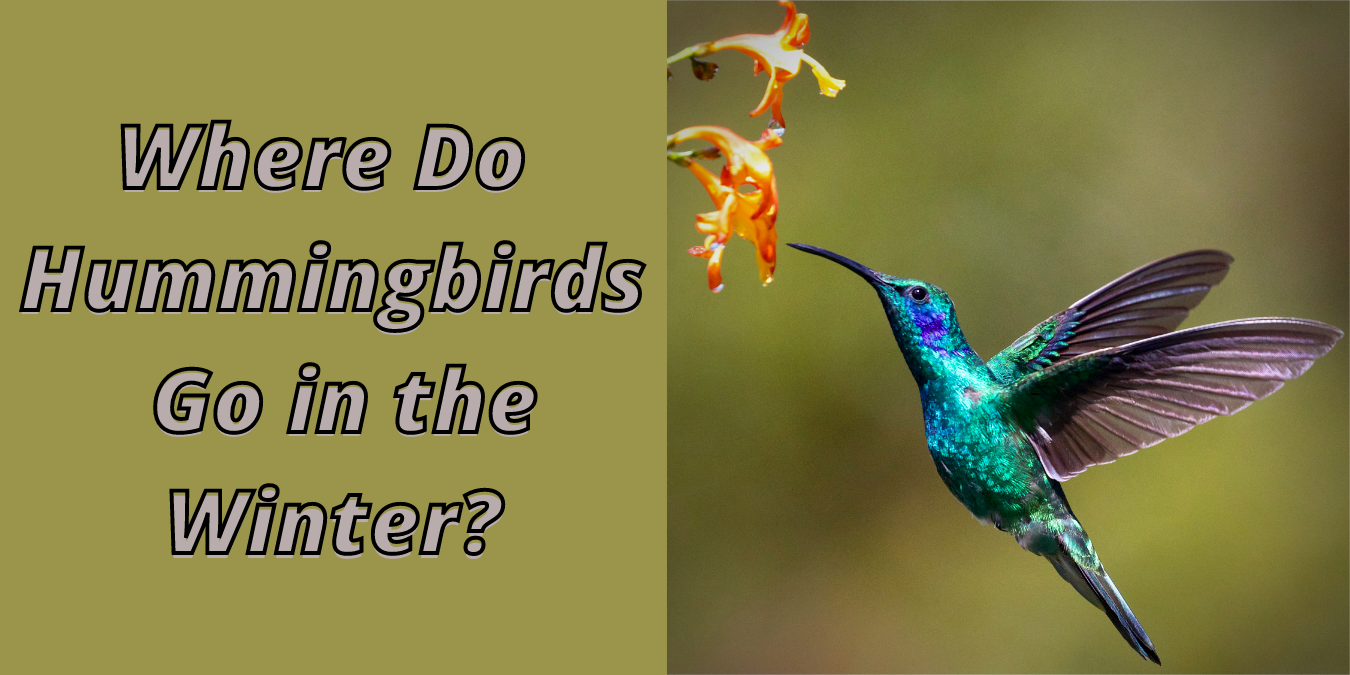Hummingbirds are exquisite little creatures and the speed at which they move their wings never seize to amaze us. Depending on where you live, you could spot them in the back of your garden effortlessly hovering over brightly coloured flowers. This was probably at the height of summer. But where do hummingbirds go in the winter? That will depend on the species of hummingbirds and ultimately your location. Let’s explore more. As a bonus, read our fun facts about the hummingbirds at the end of this article.
Most migratory bird species travel south for the winter months in search of warmer weather. This is true of most hummingbird species who have northern breeding ranges and southern nesting habitats. So, before you ask yourself a question where hummingbirds go in the winter you should find out what species of hummingbirds it is.
Habitat
All of the 350 known species of hummingbird live in the Americas. Most live in the tropics of Central and Southern America, but eight hummingbird species have breeding sites in North America and Southern Canada.
Hummingbirds prefer open meadows, sparse forests, parks and shrubby areas. Most species have such small feet that they cannot perch on tree branches, instead searching for resting spots on thin twigs, washing lines, or telegraph wires.
Hummingbirds tend to avoid dense forests or heavy shrubbed areas as it can be difficult for them to hold a hover while they drink nectar or hunt for insects.
Diet
Nectar makes up the largest part of a hummingbird’s diet. They must consume at least half their body weight per day to survive. The nectar provides a source of fast release energy which is necessary for hummingbirds to maintain their fast wingbeats. They drink nectar from flowers or garden bird feeders.
In addition to nectar, hummingbirds also feed on insects. One hummingbird can consume thousands of insects per day to get the required protein to keep their flight muscles strong. A hummingbird’s favourite insect is the daddy-long-legs (spiders) but they will also catch ants, beetles, midges, mosquitoes, gnats and other spiders.
A hummingbird’s ability to hover makes them experts at catching insects mid-flight, but they will also perch on top of bushes and wait for insects to fly past.

Predators
Despite their agility in the air, hummingbirds have many predators, mostly due to their small size. Common hummingbird predators include:
- Snakes
- Lizards
- Frogs
- Fish
- Birds of prey
- Orb-weaver spiders
- Giant praying mantis
- Bats
- Owls
That’s a lot for such a small bird to watch for! A hummingbird’s best defence is its excellent vision. They can see colour as well as humans, but they can also see ultraviolet light, which we cannot. This means their vision is more colourful than ours. You may notice that hummingbirds in your garden prefer red flowers over others.
Also Read: What Do Snowy Owls eat?
Breeding
Out of all North American hummingbirds, the Ruby-Throated species have the largest breeding range. They breed in most Eastern US states and as far north as British Columbia and Alberta in Southern Canada. Ruby-Throated hummingbirds are the most acclimated to human presence and have been known to build their nests on wires and chain loops. They can also commonly be seen on backyard bird feeders. If you happen to see this species of hummingbird in warmer months, they will eventually leave and go further South in the winter.
Rufous Hummingbirds have the longest migration of any bird in terms of body size. They travel almost 4000 miles from Mexico to their breeding sites as far north as Alaska, the most northern breeding ground of hummingbird. Their preferred breeding areas are open areas such as parks, forests and meadows. Breeding usually occurs in late spring and early summer before they migrate South back to Mexico in later summer or early fall.
Hummingbirds will build a nest within 3 days of arriving at their breeding grounds. All hummingbirds are solitary and will aggressively chase off other hummingbirds. During breeding season, males will display to females by performing deep swoops angled toward the sun, which intensifies the flashes of his gorget (bright neck plumage).
Males will also serenade (sign to) the ladies with a variety of chirps and zees. Females will build nests in the fork of a tree branch, with some species building a nest no bigger than half a walnut shell. Nests are typically built using moss, lichen, plant fibres, silk from spider webs and feathers.
Winter
Most migratory hummingbird species will go and spend the winter months in Mexico and Central America, but a small number can be seen throughout the year in southern US states such as Florida and California.
Rufous Hummingbirds spend their winter in Mexico and occasionally southern US states such as Florida. They will nest here in woodland containing oak, pine and juniper trees up to 10,000 feet above sea level.
Black-Chinned Hummingbirds prefer to spend their winter in Western Mexico, but some chose to stay along the Gulf Coast and are sometimes spotted in Southwestern Florida.
Ruby-Throated Hummingbirds travel further to spend the winter months in Southern Mexico and Central America where the climate is hot and humid.
Not all species of Hummingbird migrate. The Anna’s hummingbird has a year-round habitat stretching from Northern Mexico, along the US west coast and into Vancouver, Canada.

Conservation
Approximately 10% of hummingbird species are listed as either Vulnerable, Endangered or Critically Endangered on the IUCN red list (International Union for Conservation of Nature).
The biggest contributing factor is habitat loss due to building of roads and infrastructure, expansion of agricultural land and building of new homes. Climate change is also having a major effect on the availability of their food supply, particularly nectar-rich plants.
Hummingbird conservation can be done on an individual level, simply by having a bird or nectar feeder in your garden and planting hummingbird friendly flowers such as Trumpet Vine, Rhododendron and Petunia.
To prevent the decline of more hummingbird species, more research needs to be collated on their breeding sites and migratory patterns to avoid urbanisation and habitat destruction in those regions.
Hummingbird Fun Facts
- The Ruby-Throated hummingbird flies 800km non-stop across the Gulf of Mexico, a flight that takes approximately 20 hours to complete!
- Hummingbirds use their tongues like pipettes to draw nectar from flowers.
- Their tongue can go in and out of a flower up to 20 times per second.
- Hummingbirds need to consume half their bodyweight each day. If they slept normally overnight, they would die!
- Instead, they go into torpor at night, which is like a form of hibernation. This slows their heart rate and metabolism so they do not need to feed as often.
- The heart rate of a hummingbird is astonishing, beating at roughly 20 beats per second. In comparison, the average human heart rate is less than 2 beats per second.
- Their wings are just as fast. During a hover or normal flight, most hummingbird species beat their wings at 50-80 beats per second. During a dive, it can be up to 200 beats per second!
Also Read: Do Fleas Die in the Winter?

